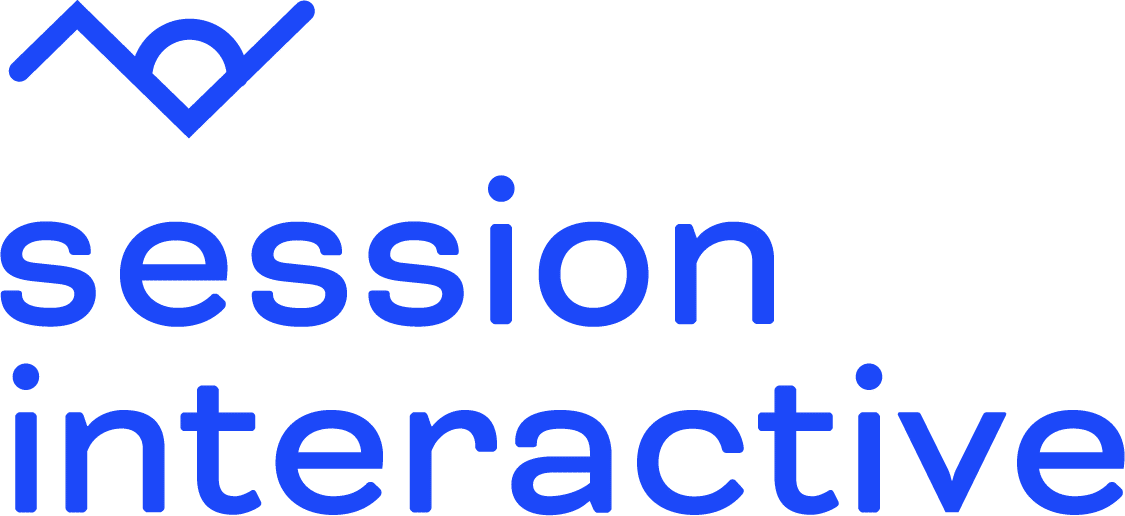As a CMO or marketing leader, it’s your job to deliver real results, not just more traffic. You’re responsible for identifying strategies that bring visitors to your site and converting them into customers or leads. But too often, SEO and CRO are treated as separate efforts, leaving potential revenue unrealized. By aligning these two strategies, you can drive scalable growth, actionable customer insights, and tangible ROI.
This guide will help you close the gap between traffic and conversions so every click counts.
In this guide:
At Session Interactive, we’ve partnered with businesses across industries to align their SEO and CRO efforts. We’ve helped brands drive high-intent traffic, create seamless conversion paths, and surpass ambitious goals. With our collaborative approach, you gain a clear roadmap to measurable results. If you’re ready to elevate your strategy, we’re here to guide you.
Acquisition and Conversion Challenges for Marketing Leadership
You already know that aligning SEO and CRO isn’t easy. Driving traffic and increasing conversions require you to tackle a series of specific, often overlapping challenges. Below, we break them down.
Driving High-Intent Traffic
Not all traffic is created equal, and this rings especially true across different industries. For eCommerce, the focus is on transactional traffic. You want visitors searching for “best wireless earbuds under $100” landing on your site, not pages geared for casual browsers. SaaS businesses, on the other hand, need to attract decision-makers actively searching for solutions like “CRM for financial advisors” to feed their pipeline effectively.
To capture high-intent traffic, you must map your SEO strategy to your customer lifecycle. Tools like SEMrush and Google Search Console can help you identify keywords aligned with your audience’s intent, whether they’re researching, comparing, or ready to take action. The payoff is traffic that’s primed to convert, not just inflate your analytics.
Disconnect Between Traffic and Revenue
If people visit your site but don’t convert, you have a problem. Often, this happens because the on-page experience doesn’t match why users came in the first place. For example, if your SEO strategy promises solutions but the page lacks clear CTAs or focused content, you’ll lose them. To close the gap, ensure that every page delivers on its promise. Pair strong SEO with a user experience designed to guide visitors toward meaningful actions.
Balancing Long-Term and Short-Term Goals
Businesses often struggle to balance immediate ROI with sustained growth. eCommerce companies, for instance, might rely on short-term CRO tactics like flash sales but risk over-discounting, which eats into margins. Healthcare providers may feel pressure to launch patient acquisition campaigns but risk neglecting SEO efforts needed to build long-term authority on highly searched topics like “telemedicine services near me.”
The key is building strategies that deliver now while scaling later. SEO is your long-term play for visibility, while CRO drives immediate impact. Use analytics to flag when short-term tactics could undermine the bigger picture, and adjust accordingly.
Scaling Across Markets and Channels
Scaling isn’t just about doing more; it’s about doing it smarter, especially in industries like hospitality and finance. When entering new markets, whether geographic or demographic, ensure your SEO strategy accounts for local nuances. A hotel expanding into Europe might need localized SEO efforts for searches like “boutique hotels in Lisbon,” while their CRO efforts need multilingual, culturally adapted landing pages. For SaaS or education providers, scaling might mean tailoring SEO efforts to industry-specific queries, such as “best LMS for K-12 schools,” while crafting custom CRO paths with demos or free trials specific to that audience.
Budgets and Resource Constraints
Marketing budgets are tight, and your team likely faces pressure to do more with less. The key is focusing on efficiency. Use data to prioritize initiatives that deliver the highest ROI. Incorporate A/B testing to refine your campaigns without overextending resources. By optimizing where it matters most, you can make every dollar work harder.
Creating Seamless Customer Journeys
Your customer’s experience is non-negotiable, especially in customer-facing industries like healthcare and hospitality. Slow load speeds, clunky navigation, or mismatched messaging can drive potential patients or guests to competitors. Focus on fast load times, mobile optimization, and contextually relevant CTAs that align with your customer’s intent at every stage.
SEO and CRO: The Importance of a Unified Strategy
SEO gets people to your site. CRO gets them to act. When you treat these strategies separately, you limit their potential. By uniting them, you create a loop: SEO drives qualified traffic, and CRO captures the value of that traffic. You can lower acquisition costs, increase ROI, and build a stronger customer experience by aligning these strategies. Ignoring this intersection means leaving growth on the table.
SEO for Sustainable Growth and Market Leadership
- Scalable Visibility and Market Presence: Effective SEO elevates your brand’s visibility, positioning it as a trusted authority in search results. This strategy becomes especially impactful when you optimize for high-intent, long-tail keywords. By meeting your audience where they are, you not only drive traffic but also reinforce credibility.
- Cost-Effective, Long-Term ROI: Unlike PPC campaigns, which deliver results only as long as you’re paying, SEO creates lasting organic visibility. For industries with highly competitive keywords, such as finance or technology, this means less reliance on costly paid campaigns. Over time, these assets generate traffic without ongoing spend, creating a sustainable acquisition channel that compounds ROI.
- Competitive Advantage: A top position in search rankings builds a moat around your business. When hospitality brands dominate for searches like “best boutique hotels in Charleston,” competitors lose visibility and bookings. Maintaining this competitive edge requires consistent optimization, but the rewards are significant for market leadership.
CRO: Maximizing Revenue from Existing Traffic
- Optimized Customer Journeys: CRO ensures the traffic driven by your SEO efforts translates into meaningful actions, such as purchases, sign-ups, or inquiries. For eCommerce brands, this might mean simplifying the checkout process with fewer form fields and better mobile responsiveness. Education providers can optimize inquiry pages by providing clear tuition details and CTAs like “Request a Brochure” or “Enroll Today.” By reducing friction at key points, you improve the likelihood that users complete their intended actions.
- Data-Driven Decision-Making: CRO relies on data to demystify what drives conversions. For example, eCommerce companies can analyze customer behavior to determine if cart abandonment increases with complex shipping calculators. By A/B testing static shipping rates against dynamic calculators, you can refine the experience and recapture lost revenue.
- Revenue Impact: CRO delivers measurable financial results. For mid-market SaaS companies, an improvement in trial-to-paid conversion rates of even 2% can significantly impact MRR. When framed this way, CRO becomes an essential tool for maximizing the value of the traffic you already have.
SEO and CRO as a Unified Strategy
When combined, SEO and CRO create a powerful growth loop: SEO drives qualified traffic, while CRO converts that traffic into measurable outcomes. Ignoring either strategy means leaving revenue potential untapped. For CMOs focused on maximizing marketing efficiency and delivering tangible business outcomes, leveraging both in tandem is a strategic imperative.
A Strategic Framework for Integrating SEO and CRO
To bring SEO and CRO into harmony, you need a structured approach. Here’s how to make it happen.
1. Unified Vision and Alignment
- Strategic Objectives: Align SEO and CRO to drive sustainable growth, enhance customer value, and maximize profitability. For example, an eCommerce brand might target a 20% increase in organic traffic alongside a 10% rise in checkout conversion rates.
- Leadership Buy-In: Ensure stakeholders understand the combined impact of traffic generation and conversion optimization on overall business outcomes. Present data-driven projections to show the tangible benefits of aligning these departments.
- Unified Goals: Break down silos between your teams. Shared goals, like boosting lifetime value alongside customer acquisition, ensure every department pulls in the same direction.
2. Market and Audience Insight
- ICP Analysis: Build a clear picture of your ideal customer profile. Use analytics tools to understand their behavior, goals, and pain points. For example, technology companies might focus on IT decision-makers by tracking engagement with demo or whitepaper content.
- Customer Journey Mapping: Identify and optimize touchpoints where customers engage with your brand, from initial search to final purchase. Hospitality brands, for instance, can map their booking funnel to minimize drop-off at the payment stage.
- Benchmarking: Compare your performance to industry peers to spotlight growth opportunities.
3. Data-Driven Decision Making
- Integrated Analytics: Use platforms like Google Analytics 4 or HubSpot to merge SEO and CRO data. This allows you to match traffic sources with onsite actions, such as the percentage of searches converting into sales.
- Holistic Insights: Examine metrics like session duration in education, which might reveal whether potential students are engaging with enrollment content.
- Predictive Insights: Tap AI to create predictive models that highlight opportunities, such as which geographic areas are most likely to convert based on past behavior trends.
4. Content as a Strategic Asset
- Value-Centric Content: Craft content that serves dual purposes. SaaS companies, for instance, can publish resources that raise awareness for long-tail keywords and include CTAs directly relevant to the reader, such as opt-ins for product demos.
- Lifecycle Optimization: Refresh eCommerce product listings to reflect seasonal keywords and trends, ensuring relevance and consistency with customer interests.
- Leveraging UGC: Featuring reviews, testimonials, or case studies elevates credibility. Healthcare providers, for example, can share patient stories to boost trust and engagement.
5. Experience-First Approach
- Experience-Led SEO: Focus on mobile-first optimizations such as quick load times. For SaaS, make demo signup pages simple and engaging to reduce bounce rates.
- Unified Experience Design: Ensure that branding and messaging align across the user’s path.
- Personalization: Tailor landing pages based on collected customer data, such as dynamic navigation paths for return buyers in eCommerce.
6. Organizational Structure and Collaboration
- Cross-Functional Teams: Unite SEO experts, CRO strategists, UX designers, and content marketers to ensure your strategies complement, rather than compete.
- Culture of Experimentation: Foster innovation through iterative A/B testing and hypothesis-driven optimization tailored to user feedback.
- Feedback Integration: Use tools like customer surveys or behavior tracking to understand friction points and improve both search and conversion outcomes.
7. Long-Term Vision and Innovation
- Future-Proofing: Stay ahead of trends like conversational AI to maintain search relevance.
- Authority and Trust: Build credibility with authoritative content, industry backlinks, and an active presence in community forums or discussions.
- Scalability: Tactics like modular content production for eCommerce ensure your efforts scale, whether you’re adding new markets, product lines, or geographic locations.
Key Takeaways for SEO and CRO Integration
When SEO and CRO work together, the results are greater than the sum of their parts. You’ll attract better traffic, convert more visitors, and lower acquisition costs. By aligning these strategies, you’ll unlock measurable growth and efficiency. Don’t settle for leaving potential on the table.
Request a consultation with Session Interactive today and discover how our tailored SEO and CRO strategies can transform your efforts into measurable results.





